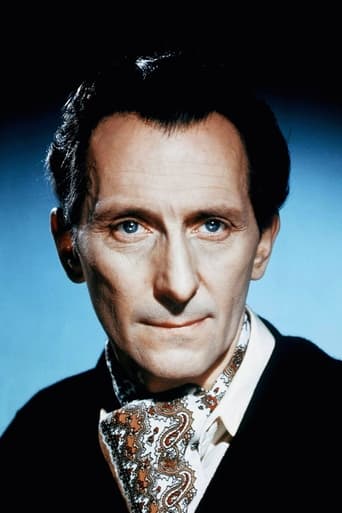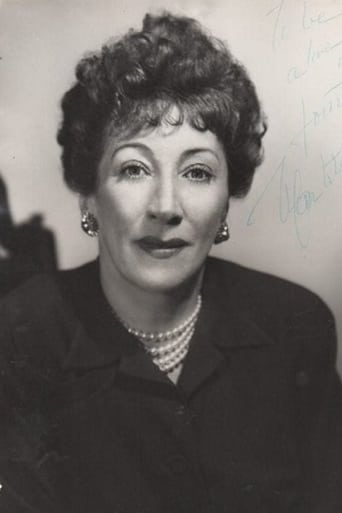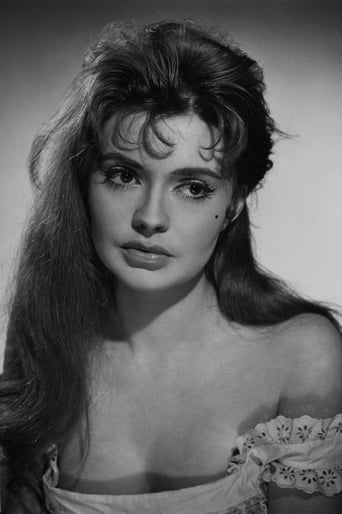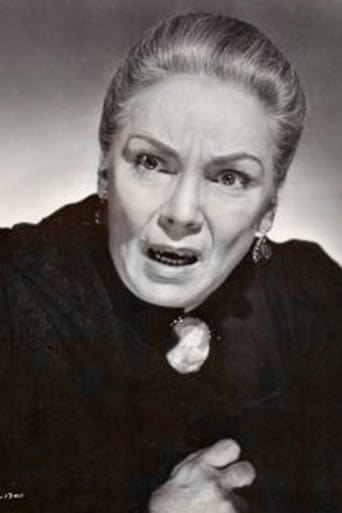Hottoceame
The Age of Commercialism
ThrillMessage
There are better movies of two hours length. I loved the actress'performance.
Abbigail Bush
what a terribly boring film. I'm sorry but this is absolutely not deserving of best picture and will be forgotten quickly. Entertaining and engaging cinema? No. Nothing performances with flat faces and mistaking silence for subtlety.
ferbs54
The title is something of a misnomer. As the story goes, following the worldwide success of Hammer Studios' "The Horror of Dracula" in 1958, star Christopher Lee decided that he did not wish to participate in any possible sequel, fearing that he might be later typecast in the vampiric role. Thus, despite the sequel's title, "The Brides of Dracula" not only does not feature Lee's participation at all, but the world's most famous neck nosher is nowhere to be found. Rather, what the viewer gets here is another Transylvanian vampire, an acolyte of Dracula's dark religion, if you will. But the results, even without Lee, are still most impressive, and even though Lee would later return in the following decades to appear in no fewer than six Dracula films for Hammer ("Dracula, Prince of Darkness" in '66; "Dracula Has Risen From the Grave" in '68; "Taste the Blood of Dracula" and "Scars of Draula" in '70; "Dracula A.D. 1972 in, uh, '72; and "The Satanic Rites of Dracula" in '73), "Brides," released in July 1960, remains one of the very best of the bunch.In the film, a beautiful young teacher, Marianne Danielle (French actress Yvonne Monlaur, who, that same year, would appear in another famous fright outing, "Circus of Horrors"), travels into the wilds of Transylvania to begin her new job at a school for young girls. When her coach driver abandons her at a local tavern, she accepts the offer of the Baroness Meinster (a most impressively imposing Martita Hunt, perhaps best known to viewers as Miss Havisham from 1946's "Great Expectations") to spend the night at her nearby castle. Once there, Marianne espies, from her balcony window, a young man, who she later learns is the Baroness' supposedly invalid son (and played by the handsome, blonde David Peel). Marianne ventures into the forbidden part of the castle to talk to the young man, only to learn that he is shackled by the leg and desperate for his freedom. Thus, the softhearted girl steals into the Baroness' room and steals the key to the young man's chains, later effecting his release. But little does the young woman know that the Baron Meinster is actually an undead bloodsucker, and that his release will lead to a new scourge of nightly depredations in the village. Fortunately, for one and all, the village priest had already become suspicious of the Baroness and her castle, and had sent for one Dr. Van Helsing (the great Peter Cushing, reprising his role from the earlier film, and who, just a few months earlier, had appeared in the undersung, literate horror offering "The Flesh and the Fiends") to come to their aid....Strangely enough, despite Lee's nonparticipation with this vampire sequel, his absence is never truly missed, as the film manages to keep the viewer otherwise riveted and entertained. Director Terence Fisher, who had helmed the original film, does his usual sterling best at creating atmosphere, and the picture boasts some impressive sets (the Meinster castle is a thing of truly awesome beauty) and fine production values. Marianne makes for an appealing heroine, both gorgeous to look at (those lips might give even Angelina Jolie cause for envy!) and surprisingly spunky overall; impressively, she does not scream once, even when her fellow teacher, Gina (actress Andree Melly), rises from her coffin as the newest, toothsome inductee of the undead. Cushing's Van Helsing, needless to say, is wonderful, as always: supercool, urbane, intelligent, unflappable, and truly, anyone's idea of the idealized vampire fighter. The 47-year-old actor even gets to do some impressive physical stuntwork in the film (jumping off of a high porch, hanging from the vane of a windmill, and engaging in rough-and-tumble fighting with the Baron). I might add that the Baron himself is eliminated at the film's conclusion in a most ingenious manner (no mere staking through the heart here!), and that the film contains any number of impressive sequences. Favorites for this viewer include the highly atmospheric sequence in which Marianne and the Baroness converse over dinner in the castle, the one in which Gina reawakens and bares her fangs, and, perhaps most memorable, the one in which Van Helsing is bitten in the neck by the Baron, and is forced to cauterize his wound with a red-hot brand. Ouch! Another moment that I highly appreciated: When Marianne says to the Baroness "God bless you," and the Baroness murmurs in reply "If only He could...." Actually, I only had a single quibble with this film, and that is the matter of the Baron being imprisoned with shackles by his mother. But if the vampire Baron can easily turn into a bat at any time, would a leg manacle actually be an effective means of retainment? But this single cavil aside, "The Brides of Dracula" remains a very fine offering from the legendary House of Hammer....
Uriah43
This movie begins with the short explanation that Count Dracula is dead--but his disciples live on. The film then shows a stagecoach being driven extremely fast over a dirt road and eventually coming to a stop at a nearby village where the lone passenger named "Mdm Danielle" is dropped off before the carriage speeds off again. It's at this time that an elderly woman walks into the inn and offers Mdm Danielle a place to stay for the night. She is then driven to a castle on the outskirts of the village. That night she meets a strange man by the name of "Baron Manster" who has been shackled inside a room within the castle and he convinces her to get the key and let him loose. Upon doing that what she doesn't realize is this particular person is no ordinary man--but a vampire who has now been set free to wreck havoc on the nearby countryside. Now rather than reveal any more I will just say that this particular film managed to continue the fine Hammer tradition of establishing a good, solid Gothic setting necessary for a movie of this type. Yet, even though it had a good story and more than adequate performances for the most part, I didn't particularly care for the ending or the selection of David Peel (as "Baron Meinster") for the role of the vampire. He just didn't seem to have the same sinister quality that actors like Bela Lugosi or Christopher Lee manage to convey on screen. But that's just my opinion. In any case, I liked this film in spite of the previously mentioned criticisms and I have rated it accordingly. Slightly above average.
lulu-17985
I have to agree with those who point out that this movie was probably put out as Saturday matinée or drive-in material. As someone who was a kid in that era, I'll go out on a limb here and say that it was the "daring-do" that appealed to most kids of the era, and the good guys winning over the bad ones. You went to the movie to be entertained. The target audience of this movie wasn't going to sit there and analyze every scene and all the set decor, and the Hammer crew knew that. They knew most people weren't experts on European architecture, so their representation of castles and inns were pretty rudimentary in some ways. They went about trying to create a relatively believable world in which to tell their story, and as far as I am concerned they did a pretty good job. So, it is a good idea to remember that when looking at this movie through 21st century eyes.One thing I'd like to address is the fact that so many reviews have people criticizing the movie because the vampire, Baron Meinster, is being held captive by shackles when he should have been able to just turn into a bat and escape. However, there is some folk lore where iron can be used to repel or incapacitate a vampire, and I expect that is what is being implied here. Also, vampires being "super beings" is also really a modern idea, so I think the criticism of Van Helsing holding his own against Meinster is also unfair.I believe that the story here is pretty straightforward. You have the decent young lady traveling to a school for other younger ladies to become an instructor there. Since she's traveling alone, she probably is supposed to be without any family, since that is something that would have been realistic at the time-since respectable families wouldn't let their female members travel alone because of safety concerns. Also, there's been criticism about the guy who shows up, pays the driver, and then disappears. I think we can logically deduce that this guy is on the Baroness' payroll to watch the roads, and if a vulnerable young lady(as in, alone)is spotted in a coach, then he pays the coachman to abandon the girl at the local inn. Then the Baroness shows up and offers the young lady lodging for the night. Hey, the local aristocracy shows up and offers you a stay in their elegant castle. How many people would turn that down? Of course, the young lady, Marianne, never realizes that the Baroness intended for her to be her vampire son's next meal. Instead, Marianne is enticed through her own curiosity to see just exactly what the weird deal is with the son, and then is tricked by him into helping him escape. She soon learns what a big mistake that is, and then all heck breaks loose until the hero, Van Helsing, shows up and saves the heroine, vanquishes they enemy, and makes everything okay.I'm not going to give a play by play of the movie, as there are plenty reviews here that do that. I do think that David Peel made a convincing and very menacing villain. Once Marianne was duped into helping him escape, it didn't take long to see that the fear in his mother's eyes was totally justified. That was one cold-hearted dude.I enjoyed the action scenes in this movie. I thought that Cushing and Peel were very convincing as antagonists determined to destroy one another.The ending is another thing that gets criticized. According to an interview I read by the director, Terence Fisher, the idea was that the "truth" of the cross was just as effective as a physical crucifix. This of course, is based on the Christian doctrine that, as a result of Christ's supernatural sacrifice by dying by crucifixion, all things on earth are subject to his spiritual authority-especially evil spirits or beings controlled by evil spirits. So, when Van Helsing twisted the windmill sails to resemble a cross, Meinster died from divine retribution, since Van Helsing was basically calling upon Christ to deliver them by invoking the symbolism of the cross. The character did the same thing in The Horror of Dracula, by using two candlesticks in the shape of a cross-though in that case it just slowed Dracula down. There is a later Dracula movie where someone also uses objects to form a cross, but I can't recall which one at the moment.This is a good movie, and one I think can be enjoyable if you just let yourself enter into world they create and let them tell you a story, with no other expectations. Yes, it's a product of it's time, but I think even now it still can entertain on the level that it was created to entertain on.
Morgan Hua
I enjoyed this movie, but I found several flaws which some people have posted about.1. Incorrect vampire lore:1a. Van Helsing able to lift the Vampire curse through branding the bite and washing it with Holy water.1b. Moonshadow windmill (somehow missing the windmill building) able to completely kill Baron Meinster. I can see sunlight doing it, but the Baron is a creature of the night and moonlight should be in his realm.1c. Baron Meinster entering the school teacher's bedroom without being invited -- which maybe possible if entering the whole school per se was enabled through being invited by the school administrators. 1d. Shacking the Baron. I'm not sure the shackles really works, even if it was silver with holy markings. If so, it might burn the Baron (for Werewolves definitely, Vampires normally not) in addition to holding him. If it doesn't burn him, then what prevents him from tearing it out of the wall or turning into a bat (or mist form) and escaping. From what I can tell, the Baron isn't supernaturally strong as in later Dracula movies.2. Bad coincidences: 2a. Van Helsing somehow finds Marrianne in the middle of the forest while driving by in a coach. Very unlikely. If she was on the road, I would have bought it. 2b. Running into the con artist doctor who tells Van Helsing about the death at the Girls School. 2c. Greta escapes the priest easily and off screen.Things unsaid: The Baroness is feeding young ladies to her son. We'll unless she is staking or burning the bodies of his victims, there should be a lot of Brides in the area. So, I assume she or Greta must be disposing of their bodies properly.Here's what I loved about the movie: 0. Peter Cushing as Van Helsing.1. Baroness Meinster though creepy wound up being sympathetic. But why wait until sunrise until dispatching her? Unless Van Helsing thinks that it would spare her pain, but he was wrong as she made a sound when he dispatched her. So, that makes me believe that Van Helsing isn't as experienced in Vampire lore as he says he is. 2. The Nurse Greta was sufficiently creepy especially in the scene where she wakes up one of the Baron's Brides from the grave. A very iconic and nice scene. But from Van Helsing's view point, he seems surprised and scared which tells me he's not as experienced as we've seen him in other Dracula movies. 3. Marianne actually being the instrument of her own peril by freeing the Baron. I loved how she tied the key to a handkerchief and threw it to the Baron vs just tossing it. 4. Con artist doctor. I loved how this guy is scamming everyone and is a man of science. The Anti- Van Helsing. 5. The locks dropping off Gina's coffin during the wake and the horse in distress. That was a great scene and extended sequence. 6. Van Helsing being bitten and then using the brand and holy water to un-vampire himself was a cool scene though incorrect vampire lore. Van Helsing rarely gets bitten in the Dracula movies. 7. Using the hot coals by both Van Helsing (to cure himself) and by the Baron to create a fire barrier for his escape and also inadvertently setting the windmill on fire and burning his brides. 8. The windmill shadow was also a cool scene, but I wished it only stopped the Baron long enough for Van Helsing to stake him vs killing the Baron outright.Overall there was much more to like than to dislike with iconic scenes and a very robust 47 year old Peter Cushing doing stunts.






